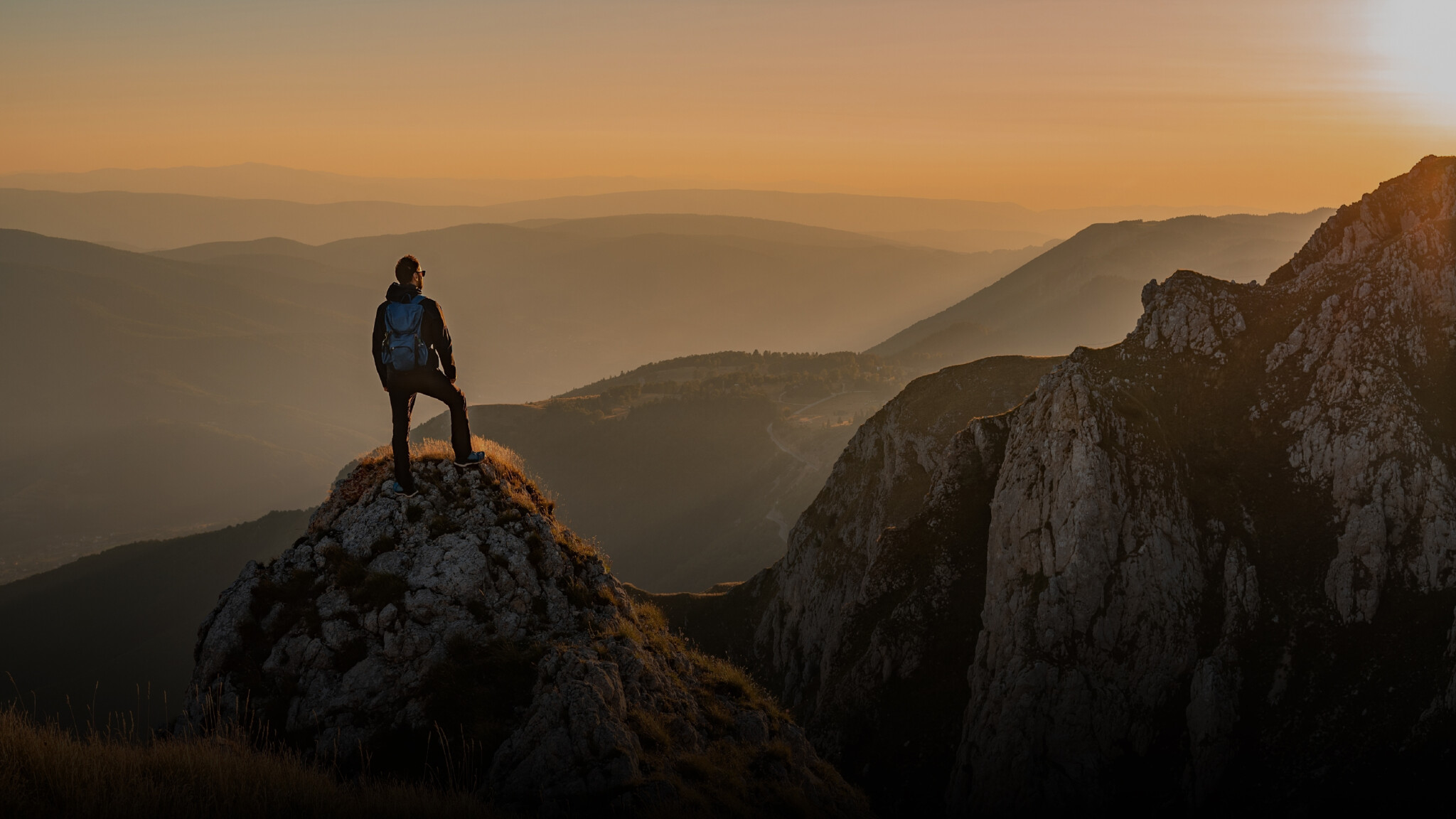In an era of rapidly advancing technology, the line between man and machine seems to be blurring faster than ever before. AI assistants, online friends, and virtual colleagues are quickly becoming part of not only our digital but also our cultural and social environments. With much of our interpersonal communication already happening through digital media, the contours delineating what it actually means to be human, rather than a convincing replica of one, may soon be impossible to discern. In the end, it may be matter that matters.
Speaking at the Alliance for Responsible Citizenship a few months ago, Marry Harrington and Jonathan Pageau began to outline the defining features of human identity in this digital age. Harrington identified humanity’s need to ground ourselves in specific virtues to guide our lives, while Pageau emphasized humanity’s uniqueness via the Imago Dei. Both made fascinating and true observations about the metaphysical and intellectual realities that separate humans from artificial intelligence. I would add an additional dimension to that conversation: Humans aren’t defined solely by abstract virtues or creative consciousness; we are also who we are because of our physical nature. Our very being involves a physicality so important that all of Christian metaphysics hinges on physics – the incarnation and bodily sacrifice of Jesus here on earth.
Enjoy independent, ad-free journalism - delivered to your inbox each week
Our physicality, our rootedness in specific places, bodies, and landscapes, is a fundamental part of what it means to be human. In our new digital world, our connection to the tangible world becomes not just nostalgic, but necessary. Protecting and conserving the natural world around us, then, is about more than merely conserving beauty – it is fundamentally about preserving ourselves. Staying human today requires staying grounded in this physical world, cultivating a proper relationship with the outdoors as something to steward, cherish, and live within, rather than escape from or exploit.
If there’s a quote that directly sums up many people’s disconnectedness with their bodies, it may be this one, found variously attributed in memes online: “You’re a ghost driving a meat-coated skeleton made from stardust, riding a rock, hurtling through space. Fear nothing.” Though it echoes God’s curse on Adam during the fall, For dust you are, and to dust you shall return, the sleight of hand lies in that the new phrase sees us as disembodied beings. We are no longer dust, but ghosts. No longer bodies, just driving them.
This disembodiment is the philosophical fruit of postmodernism and has embedded itself so deeply into modern thought that it often goes unnoticed and unprotested. Whereas classical thought viewed the body and soul as an integrated whole, both equally part of who someone is, postmodernists argued that identity categories like race and gender were socially constructed, and sought to free what they saw as the “self” from the bodies that bore the scars and restrictions of social and political power structures. This alienation eventually led to the language we hear today, including terms like “queer bodies” or “black and brown bodies”, and eventually to things like trans ideology, that require the divorce of body and soul in order to remain coherent.
While postmodernist thought sees this disembodiment as a necessary liberation from the physical constraints of our bodies, their limitations, their sexual, racial, and class implications, and their political and economic oppression, the physical constraints of the created world should be seen as freeing, not claustrophobic. Man’s creative spirit can and should thrive, in particular in his cultivation and stewardship of the created world, but must be properly rooted within the constraints and confines of the natural world. In the same way that objective metaphysical truth guides and shapes us as moral beings, objective physical truth offers guardrails and boundaries that help us make sense of the world around us. This anchoring ultimately frees man’s creative spirit, not in the transhumanist sense but in the properly-ordered sense of living and innovating within a finite world.
Help Ensure our Survival
If humanity now sees itself as having conquered the physical world, historically that dynamic was inverted. Once upon a time, our ties to our physicality and the earth were unignorable, tethered as we were to the land by virtue of our ancestry, seasons by virtue of our food, and the elements by virtue of our tools. Today, modern technology has rendered this relationship more optional than ever. Indeed, it must even be an active choice for many, as life in the digitized world becomes more and more unmoored from our bodies, world, and their limits.
Conservation, then, is not just a matter of conserving the physical world but of our relationship to it. Protecting nature is often seen as something we either do as atonement for our carbon footprints or as an abstract act of altruism, but this mental model of environmentalism unhelpfully neglects humanity’s part in the picture. Conservation, rather, must exist in the context of human-ordered ends in order to be coherent. In addition to altruism, we conserve forests to balance our needs for resources and recreation, water for drinking and navigation, and balance pollution between public health and economic opportunity. If the goal were purely preservation, environmentalism would simply be a matter of minimizing our footprints at all cost rather than exercising prudence over where to step.
While much of this relationship is removed from our periphery courtesy of our supply chains, time outdoors can bring us back face-to-face with our ties to the physical world. Nature reminds us of our scale and our limits in extremely tangible ways, restricting our power with a tether to the material world. It also binds us to itself, reinforcing a sense of belonging to something greater than just our individuality. Finding our place in the outdoors is the antivenom to climate catastrophism precisely because it anchors humanity within the natural world rather than seeing us as its natural predator. Whereas climate extremism acts as a religion without salvation, plagued by panic, a more rooted view of conservation offers an opportunity for gratitude and an invitation to steward the balance between enjoyment, necessity, and protection for future generations.

In the age of AI, staying human means staying grounded. Conservation isn’t nostalgia—it’s a vital tether to reality in an increasingly virtual world.
In the digital age, these efforts become doubly more central to preserving not just the landscapes, but also the conditions and practices that remind us of who we are as embodied beings. Time spent tending a garden, walking a ridgeline, or fishing a stream reconnects us with the natural textures and rhythms of the earth that distinguishes us from artificial mockups of life. Conservation is no luddite rejection of innovation, but a re-centering, an insistence that even as virtual spaces expand, our roots in real places, seasons, and ecosystems remain essential. In protecting the natural world, we are not merely safeguarding scenery; we are safeguarding the tapestry against which human life, in its fullest and most meaningful sense, once unfolded, currently unfolds, and will continue to unfold.
In recent history, this safeguarding has become several layers too abstract, to the detriment of the environmental movement. In an effort to stress the urgency of issues like climate change, many environmentalists have invoked polar bears, penguins, and glaciers, inadvertently detaching the project of conservation farther from home. True conservation begins not with abstract love for Mother Nature but with affection for the particular places – and its people – we know intimately. Wendell Berry’s call to “know the land and be known by it” underscores that stewardship flourishes where rootedness exists. It is far easier to care for a creek you’ve fished with your grandfather, or a field you’ve worked beside neighbors, than for the distance and abstraction, however heart-wrenching, of an endangered species you have only ever seen in a David Attenborough documentary. Building personal and communal ties to specific landscapes fosters not just belonging but responsibility, borne from the realization that our welfare and that of our corner of the earth are inextricably linked. In an era when mobility, virtual connection, and placelessness are default, cultivating loyalty to locality is a step of quiet radicalism.
Of course, this vision of conservation should manifest in practical implications, too. It calls us to protect landscapes not just for posterity, but because they root us in a shared story of heritage. It calls for supporting generational farms that tie communities to land through work, memory, and care. It looks like building walkable city centers and public parks that knit together daily life with daily reminders of nature through green space. It includes securing access to hunting lands, rivers, and trails that sustain outdoor traditions and deepen civic connection to the natural world. And it means ensuring every child has the chance to encounter the outdoors through school field trips, summer camps, or scouting programs, not just for recreation, but as a formative part of becoming human. These efforts, both personal and public, restore a grounded environmentalism, one rooted not in fear or abstraction, but in love of place, people, and their tangible permanence.
As artificial intelligence accelerates the drift toward disembodiment, and all of the implications for our mental health intensify, conservation emerges not simply as an environmental ethic but as a human one. It is a way of anchoring ourselves in reality, a deliberate return to the tangible patterns that remind us who we are. In an age where machines can mimic voices, faces, and even emotions, what cannot be replicated is the sacramental integrity of life designed for communion with the created order. The task before us is not to reject technology, but to wield it without losing our footing, ensuring that in a world of growing virtuality, we remain people of place. Conservation in the age of AI is not just about saving the planet, but about saving the conditions in which human life can remain fully human. It is an invitation to stay grounded not out of empty nostalgia, but rather out of existential necessity.
Chris Barnard is the President of American Conservation Coalition.




Comments (0)
Only supporting or founding members can comment on our articles.